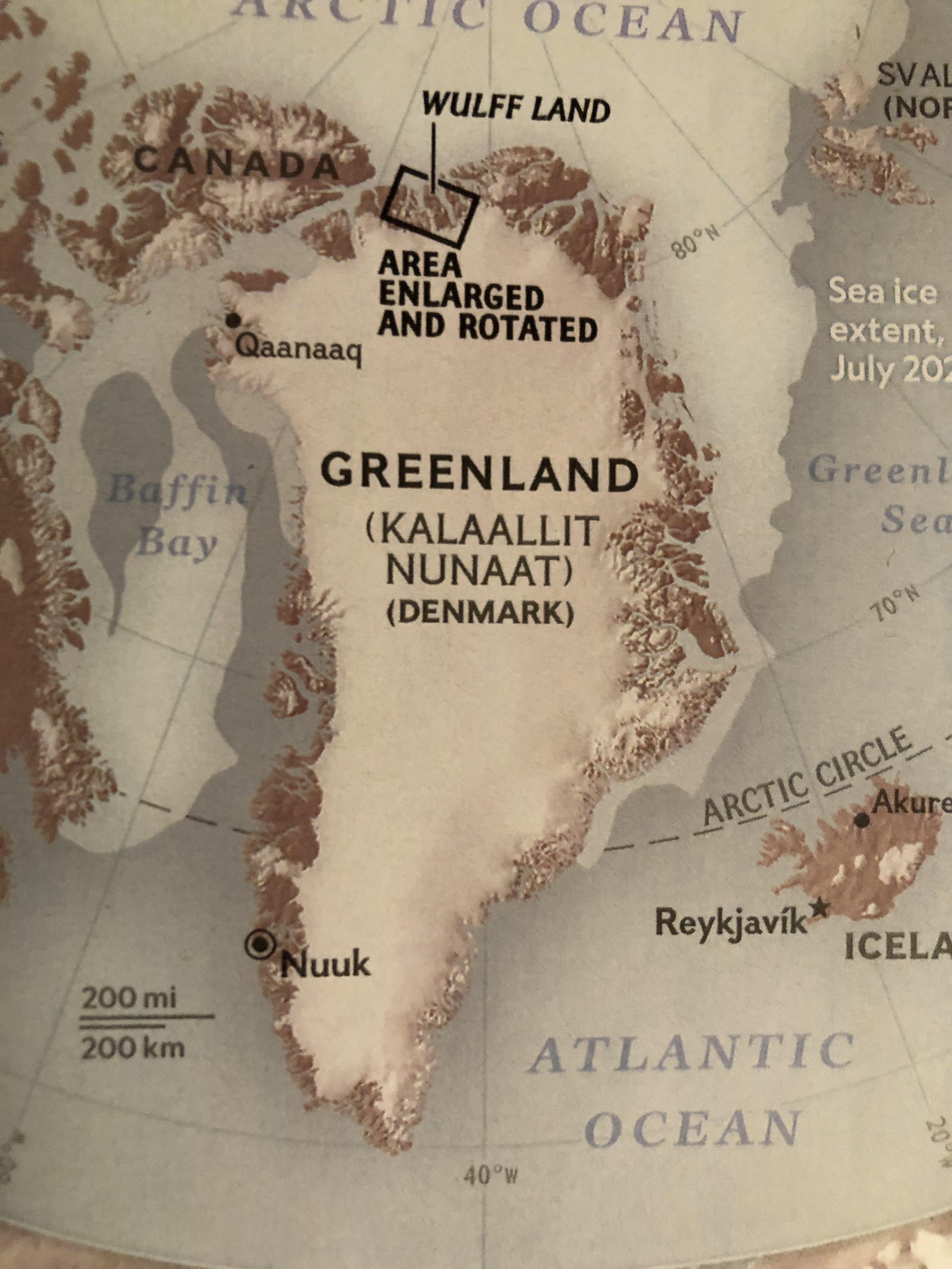Peekay’s Prescient Geography Lesson
Sprawled across the standup desk next to a sliding glass door in my studio, my ginger cat Peekay is having an unseasonably warm late January sunbath. As he dozes from his lofty perch, I run my fingers through his golden fur and recall a geography lesson on the nature of salt water and shrinking Arctic ice caps that I had at Boomerang Creek almost two decades ago with our three cats Fanny, Scribbles and Pooh. Now, 18 years later, Peekay looks out at the woods that surrounds our home above Nevada City as I begin relating that same geography lesson—one that has recently taken on new importance in today’s world of geopolitics.
Fall 2007…My conversation with Fanny, Scribbles and Pooh
“Did you feel the earth move recently?” I query our three cats as they stoically sun themselves next to me on our favorite rattan couch on the porch at Boomerang Creek. “Well, not exactly move,” I went on. “More like a realignment of sorts. Want to know why?”
My question of potentially earth-shattering importance was met with complete feline indifference. The cats were unaware that world scientists had reported that the Arctic ice cap had shrunk to its smallest size in history. It was time to tell them about TIME’s October 1, 2007 cover story, “Who Owns the Arctic?”
As they continued to doze, I explained the stunning implications of melting Arctic ice that had opened up a northwest shipping lane—one mariners have dreamed of since Christopher Columbus arrived in the Americas. For centuries, sailors searched for a Northwest Passage, hoping to find the existence of an ice-free shipping shortcut from the Atlantic Ocean to the Pacific. According to the 2007 TIME article, scientists were predicting that the route that runs below Iceland and Greenland, through the Arctic archipelago in northern Canada and along the northern coast of Alaska could be ice free in as few as 10 years hence.
I elaborated on the monumentality of this ice-breaking news. In 2007, ships traveling between Europe and Asia traveled through the Panama Canal where they occasionally experienced delays and had to pay passage fees. By then, many of the largest container and tanker ships that couldn’t fit in what was then an 88-year-old canal were forced to either use smaller vessels or to circle South America via the more treacherous Cape Hope route. According to the 2007 article, scientists predicted an ice-free Northwest Passage would reduce the route of these ships by 4,000 miles.
When not a whisker twitched, I cautioned the cats that this potential windfall for shippers could threaten native cultures and Arctic wildlife. “The combination of declining ice and dramatically increased ship traffic could alter the feeding habits of fish, seals and polar bears, further threatening the traditional way of life of the Inuit communities that depend on ice-bound Arctic creatures for their survival. “And,” I added, “there is always the possibility of another Exxon Valdez-like oil spill in this fragile region.”
“There’s a complex, interconnected world of geopolitical activity ongoing in the Arctic region,” I tell the trio, “that few know anything about. The Arctic could very well become the world’s new theater of war.” ABC News had reported (in 2007) that Danish commando dog-sled patrols were guarding northern Greenland. U.S. icebreakers were mapping the Arctic, and Russian subs were planting their flag on the same seabed. Also, the Canadian navy was expanding its Arctic patrols, running military exercises, and they’d ordered six new military patrol ships, and were building up two of its Arctic military bases.”
“Remember the great land grab that went on in the American West in the 1800’s?” I reminded my three Midwest-centric cats. “Now it’s happening in the Arctic where there are giant, largely unexplored oil and gas fields under that seabed. And as the ice melts away, just imagine the warm-water fisheries that will suddenly be accessible.”
I now had the full attention of the three cats who all loved fish. “But that’s not all,” I went on, shifting to another bit of scientific news I’d just heard on the subject of salt water and fuel. “A man has invented a machine that could provide the world with a virtually limitless source of energy. The cats are thinking fish oil. I told them, “No! It’s saltwater!”
A retired broadcast engineer in Florida was experimenting with a radio frequency generator. He discovered that radio waves could release oxygen and hydrogen from saltwater, thus creating a burning flame intense enough to melt a test tube.
“Imagine the possibilities,” I told the cats as they rose, stretched, and headed back inside. “That burning test tube could be a steam turbine or a car engine. Just as sea levels are rising due to the Arctic ice melt, saltwater could become the ultimate clean fuel.”
Winter 2025
As Peekay’s geography lesson concluded, I felt the earth shift ever so slightly. Rubbing his head behind his ears, I whispered, “Pay close attention, my friend. The issue of who should own Canada, Greenland and the Panama Canal is about to become a hot geopolitical topic.”
[Footnote: National Geographic’s January and February 2025 issues include an article on a secret Cold War military program underway in the 1960s in Greenland, and one on climate research in unexplored Arctic caves that could provide new insights into our warming future.]







